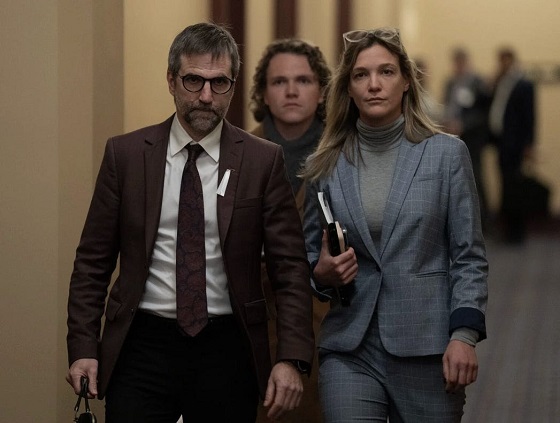armed forces
REMEMBRANCE DAY: REBUILDING CANADA’S MILITARY
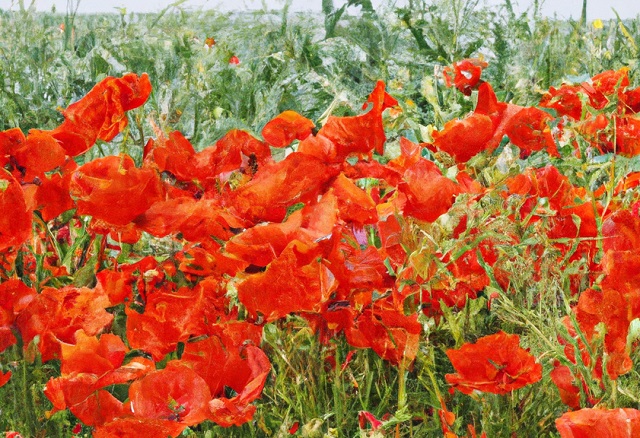
From the Frontier Centre for Public Policy
By Brian Giesbrecht | David Redman
In Flanders fields the poppies blow
Between the crosses, row on row,
………..If ye break faith with us who die
We shall not sleep, though poppies grow
In Flanders fields.
This is the iconic poem written by John McCrae while World War 1 raged, shortly before he too became one of the 40,000,000 million or so people who died during that horrific, meat grinder of a war.
More than 61,000 Canadian soldiers, like McCrae, died in that awful war, and at least 170,000 were seriously wounded – many losing limbs and eyes.
And only a few decades later, World War 2 – really just a continuation of that first European civil war – took in excess of 40,000 more Canadian lives. Canadians were fighting against pure evil. Most were young men struck down in what should have been the prime of their lives
These brave men fought to safeguard the freedom and values that Canada stands for. That Canada didn’t start in 1867. It was formed long before then in a crucible of ancient Greeks, the Jews of Jerusalem, through the Roman Empire, the building of Britain, and the enlightenment. Not every Canadian soldier could articulate every nuance of exactly what that long journey that created Canadian freedom stood for, but they certainly knew why they were willing to sacrifice their lives to preserve what they loved. John McCrae knew exactly what he was fighting for, and he paid the ultimate price.
But what about his challenge to Canadians of today? Have we accepted that torch from failing hands, and held it high?
Or have we broken faith with those who died to save the Canada that he and so many others gave their lives for? What would John McCrae think of Canada today?
Let’s take a look first at Canada’s armed forces. During McCrae’s time, and right through WW2, and the Korean War that followed, Canada punched well above its weight internationally. Canada had a strong army, and our leaders were universally respected. Prime Minister Lester Pearson became the first and only Canadian Prime Minister to win a Nobel Prize for his deft handling of the Suez crisis.
Canada continued to stand strong on the international stage into the 1960s. Our military was strong, Canadian leaders were respected, and we contributed our fair share to our international commitments, such as NATO.
Then came the Pierre Trudeau years. The integration of the Canadian Armed Forces (CAF) in February 1968, while supposedly to increase efficiency, was in fact a brutal exercise in cost cutting, reducing the Army, Navy, and Air Force strengths from over 105,000 to 70,000. The senior Trudeau even wanted to take Canada out of NATO, and was only dissuaded from that bit of insanity by dire warnings from advisers, and threats from allies that doing so would have dire consequences for Canada, domestically and internationally.
The 1980s saw a return to the common-sense realization that Canada must support its armed forces. Total strength of the combined armed forces was expanded to 85,000, and commitments to NATO were honoured. Canada once again was respected by its allies, and once again Canada was punching above its weight on the international stage. In fact, the Mulroney government’s contribution to the ending of South African apartheid was one of our finest hours.
Canada’s armed forces once again felt supported and respected.
But that was then. And this is now. Canada has gone from that place of respectability to a very low place indeed. And virtually everything that has been done since the Justin Trudeau Liberals took power in 2015 has made things so much worse. Slash and burn is probably the best way to describe their military policy. A series of cuts since 2015 have rendered our armed forces virtually toothless. The latest cruel decision to cut a further one billion dollars from the armed forces can almost be seen as an in-your-face insult to our people in uniform.
Canada still has proud and capable men and women in our armed forces. But they are being emasculated by an uncomprehending government that insists on using Canadians’ hard-earned money for every Woke cause in the book – everything except our defence needs. We now completely rely on the Americans to defend us. We have extremely diminished capacity to honour our NATO commitments. Our international partners no longer take us seriously.
I think we can safely say that John McCrae would not be impressed with what has been done with his beloved army, and our reputation abroad.
The current federal government has no interest in rebuilding our debilitated armed forces. In fact, the Prime Minister candidly admitted that he has no intention of even trying to meet Canada’s NATO commitments.
Under his leadership only further cuts to our armed forces can be expected.
As stated in the National Post, there is simply not enough money to fund both a strong army, and the Trudeau government’s socialist pet projects. So, the army must go begging.
However, the current government will not be here forever. Planning must begin now to rebuild our forces, honour our international commitments, and regain our rightful place on the world stage.
In 1967, Canada proudly celebrated the centenary: a country to be proud of for our freedom, peace and internal unity. These values had been bought with the blood of our youth. Today, Canada is no longer considered a trusted ally. Until our nation takes national security seriously, Canada will remain irrelevant, both externally and internally.
Brian Giesbrecht, retired judge, and David Redman, retired Lieutenant Colonel in Canadian Army, are Senior Fellows at the Frontier Centre for Public Policy
armed forces
Global Military Industrial Complex Has Never Had It So Good, New Report Finds
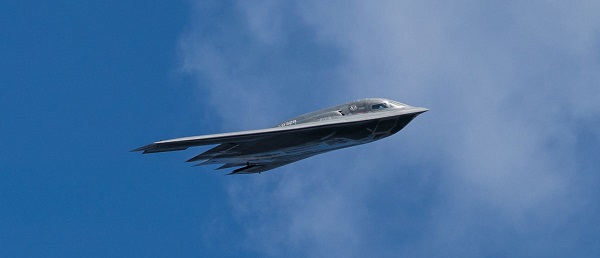

From the Daily Caller News Foundation
The global war business scored record revenues in 2024 amid multiple protracted proxy conflicts across the world, according to a new industry analysis released on Monday.
The top 100 arms manufacturers in the world raked in $679 billion in revenue in 2024, up 5.9% from the year prior, according to a new Stockholm International Peace Research Institute (SIPRI) study. The figure marks the highest ever revenue for manufacturers recorded by SIPRI as the group credits major conflicts for supplying the large appetite for arms around the world.
“The rise in the total arms revenues of the Top 100 in 2024 was mostly due to overall increases in the arms revenues of companies based in Europe and the United States,” SIPRI said in their report. “There were year-on-year increases in all the geographical areas covered by the ranking apart from Asia and Oceania, which saw a slight decrease, largely as a result of a notable drop in the total arms revenues of Chinese companies.”
Notably, Chinese arms manufacturers saw a large drop in reported revenues, declining 10% from 2023 to 2024, according to SIPRI. Just off China’s shores, Japan’s arms industry saw the largest single year-over-year increase in revenue of all regions measured, jumping 40% from 2023 to 2024.
American companies dominate the top of the list, which measures individual companies’ revenue, with Lockheed Martin taking the top spot with $64,650,000,000 of arms revenue in 2024, according to the report. Raytheon Technologies, Northrop Grumman and BAE Systems follow shortly after in revenue,
The Czechoslovak Group recorded the single largest jump in year-on-year revenue from 2023 to 2024, increasing its haul by 193%, according to SIPRI. The increase is largely driven by their crucial role in supplying arms and ammunition to Ukraine.
The Pentagon contracted one of the group’s subsidiaries in August to build a new ammo plant in the U.S. to replenish artillery shell stockpiles drained by U.S. aid to Ukraine.
“In 2024 the growing demand for military equipment around the world, primarily linked to rising geopolitical tensions, accelerated the increase in total Top 100 arms revenues seen in 2023,” the report reads. “More than three quarters of companies in the Top 100 (77 companies) increased their arms revenues in 2024, with 42 reporting at least double-digit percentage growth.”
armed forces
Carney’s ‘Shared Sacrifice’ Is a Lie. Only Veterans Are Bleeding for This Budget
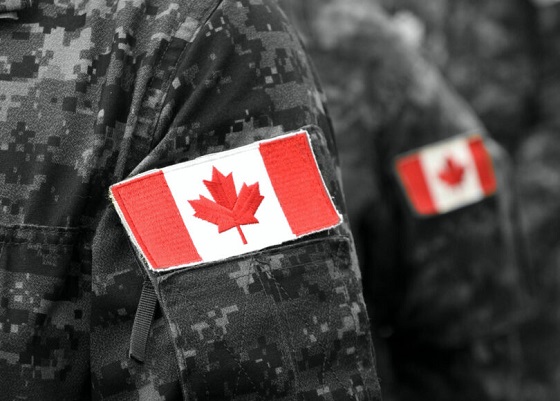
How the 2025 Federal Budget Demands More From Those Who’ve Already Given Everything
I’ve lived the word sacrifice.
Not the political kind that comes in speeches and press releases the real kind. The kind Mark Carney wouldn’t know if it slapped him in the face. The kind that costs sleep, sanity, blood. I’ve watched friends trade comfort for duty, and I’ve watched some of them leave in body bags while the rest of us carried the weight of their absence. So when the Prime Minister stood up this year and told Canadians the new budget would “require sacrifice,” I felt that familiar tightening in the gut the one every veteran knows. You brace for impact. You hope the pain lands in a place that makes sense.
It didn’t.
Kelsi Sheren is a reader-supported publication.
To receive new posts and support my work, consider becoming a free or paid subscriber.
Six months into Mark Carney’s limp imitation of leadership, it’s painfully clear who’s actually paying the bill. The 2025 budget somehow managing to bleed the country dry while still projecting a $78-billion deficit shields the political class, funnels money toward his network of insiders, and then quietly hacks away at the one department that should be sacrosanct: Veterans Affairs Canada.
If there’s one group that’s earned the right to be spared from government-imposed scarcity, it’s the people who carried this country’s flag into danger. Veterans don’t “symbolize” sacrifice they embody it on the daily And when Ottawa tightens the belt on VAC, the consequences aren’t abstract. They’re brutal and direct, causing nothing but more death and destruction. But Mark Carney doesn’t lose sleep over veterans killing themselves.
Punishment disguised as budgeting for a veteran means the difference between keeping a roof or sleeping in a truck. Punishment disguised as budgeting means PTSD left untreated until it turns a human being into another suicide statistic. Punishment disguised as budgeting means a veteran choosing between groceries and medication because some number-shuffler in Ottawa wants to pretend they’re being “responsible.”
This isn’t fiscal restraint it’s political betrayal wrapped in government stationery. Ottawa sells it as hard choices, but the hardness always falls on the backs of the same people: the ones who already paid more than their share, the ones who can’t afford another hit. Carney and his cabinet won’t feel a thing. Not one missed meal. Not one sleepless night. Not one flashback.
But the men and women who already paid in flesh? They’re the ones being told to give more.
That’s not sacrifice.
That’s abandonment dressed up as fiscal policy.
And Canadians need to recognize it for what it is a government that demands loyalty while refusing to give any in return. The fine print in the government’s own documents reveals what the slogans won’t.
Over the next two years, VAC plans to cut $2.227 billion from its “Benefits, Services and Support” programs. [2] Broader “savings initiatives” reach $4.4 billion over four years, much of it through reductions to the medical-cannabis program that thousands of veterans rely on to manage chronic pain and PTSD. [3] Independent analysts estimate yearly losses of roughly $900 million once the cuts are fully implemented. [4]
To put that in perspective: no other department is seeing reductions on this scale. Not Defence, not Infrastructure, not the Prime Minister’s Office thats for damn sure. Only the people who’ve already paid their debt to this country are being asked to give again.
The government’s line is tidy: “We’re not cutting services we’re modernizing. Artificial Intelligence will streamline processing and improve efficiency.”
That sounds fine until you read the departmental notes. The “modernization” translates into fewer human case managers, longer waits, and narrower eligibility. It’s austerity dressed up as innovation. I’ve coached veterans through the system. They don’t need algorithms; they need advocates who understand trauma, identity loss, and the grind of reintegration. They need empathy, not automation.
This isn’t abstract accounting. Behind every dollar is a life on the edge, the human cost and toll is very real.
- Homelessness: Veterans make up a disproportionate number of Canada’s homeless population. Cutting benefits only deepens that crisis.
- Mental Health: Parliament’s ongoing study on veteran suicide shows rising rates of despair linked to delays and denials in VAC services. [5] Knowing MAID for mental illness alone in 2027 will take out a significant amount of us.
- Food Insecurity: A 2024 VAC survey found nearly one in four veterans reported struggling to afford basic groceries. That’s before these cuts.
We talk about “service” like it ends with deployment. It doesn’t. Service continues in how a nation cares for those who carried its battles, and this doesn’t include the cannabis cut to medication or the fight’s we have to fight when they tell us our injuries are “not service related”
The insult is magnified by the timing. These cuts were announced just days before November 11 Remembrance Day, when Canadians bow their heads and say, “We will remember them.”
Apparently, the government remembered to draft the talking points but forgot the meaning behind them, not a single one of the liberal government should have been allowed to show their faces to veteran’s or at a ceremony. They’re nothing but liars, grifters and traitors to this nation. Yes I’m talking about Jill McKnight and Mark Carney.
The budget still runs the second-largest deficit in Canadian history. [6]
Veteran cuts don’t fix that. They barely dent it. What they do is let the government say it’s “finding efficiencies” while avoiding the real structural overspending that created the problem in the first place. When a government chooses to protect its pet projects and insider contracts while pulling support from veterans, that’s not fiscal discipline it’s moral cowardice. The worst part is that This isn’t an isolated move. It fits a six-month pattern: large, attention-grabbing announcements about “reform,” followed by fine print that concentrates power and shifts burden downward. Veterans just happen to be the first visible casualty.
The same budget expands spending in other politically convenient areas green-transition subsidies, digital-governance infrastructure, and administration while the people who once embodied service are told to tighten their belts.
As a combat veteran, I know what it’s like to come home and realize that the fight didn’t end overseas it just changed terrain. We fought for freedom abroad only to watch bureaucratic neglect wage a quieter war here at home. Veterans don’t ask for privilege. They ask for respect, for competence, for follow-through on the promises this country made when it sent them into harm’s way.
Here’s what really needs to change, the liberal government has to go, thats step one. Restore VAC funding immediately. Any “savings” plan that touches benefits, services, or support should be scrapped. End the AI façade. Efficiency can’t replace empathy. Keep human case workers who understand the veteran experience. Audit and transparency. Publish a detailed breakdown of where VAC funds are cut and who approved it. Canadians deserve to see the receipts. National accountability. Every MP who voted for this budget should face veterans in their constituency and explain it, face-to-face.
Budgets are moral documents. They show what a country values. By slashing VAC while running record deficits, this government declared that veterans are expendable line items, not national obligations. The Prime Minister promised “shared sacrifice.” But the only people truly sacrificing are the ones who already gave more than most Canadians ever will.
Sacrifice isn’t about spreadsheets; it’s about service. It’s what every veteran understood when they raised their right hand. This government’s brand of sacrifice asking wounded soldiers to pay for political mismanagement isn’t austerity. It’s abandonment.
Canada owes its veterans more than a wreath once a year. It owes them respect written into every budget, not erased from it.
KELSI SHEREN
Footnotes
[1] The Guardian, “Canada’s 2025 Federal Budget Adds Tens of Billions to Deficit as Carney Spends to Dampen Tariffs Effect,” Nov 5 2025.
[2] True North Wire, “Liberal Budget to Cut $4.23 Billion from Veterans Affairs,” Nov 2025.
[3] StratCann, “Budget 2025 Includes Goal of Saving $4.4 Billion in Medical Cannabis Benefits,” Nov 2025.
[4] Canadian Centre for Policy Alternatives, “Where Will the Federal Government Cut to Pay for Military Spending and Tax Cuts?” Nov 2025.
[5] House of Commons Standing Committee on Veterans Affairs, “Study on Veteran Suicide and Sanctuary Trauma,” ongoing 2025.
[6] CBC News, “Federal Budget 2025 Deficit Second Largest in Canadian History,” Nov 2025.
Kelsi Sheren is a reader-supported publication.
To receive new posts and support my work, consider becoming a free or paid subscriber.
-
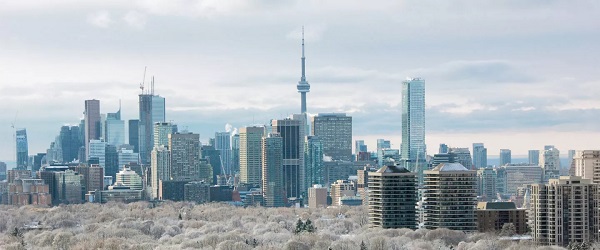
 Business2 days ago
Business2 days agoRecent price declines don’t solve Toronto’s housing affordability crisis
-
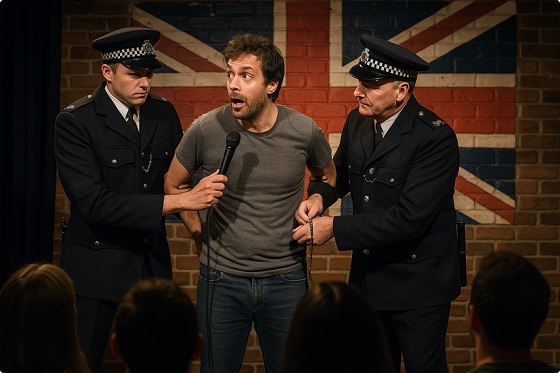
 Censorship Industrial Complex1 day ago
Censorship Industrial Complex1 day agoA Democracy That Can’t Take A Joke Won’t Tolerate Dissent
-
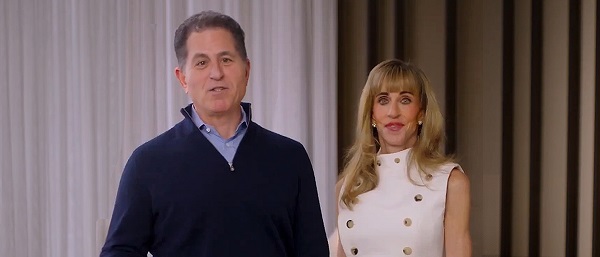
 Daily Caller2 days ago
Daily Caller2 days agoTech Mogul Gives $6 Billion To 25 Million Kids To Boost Trump Investment Accounts
-
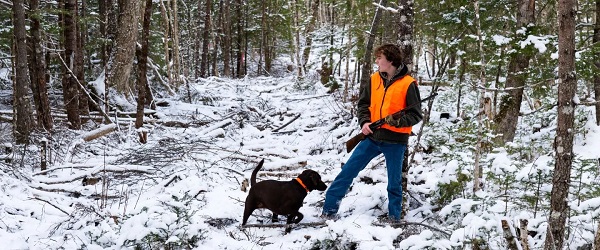
 Business2 days ago
Business2 days agoOttawa’s gun ‘buyback’ program will cost billions—and for no good reason
-
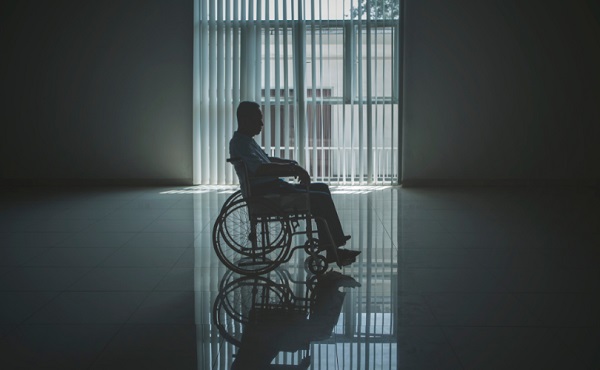
 MAiD19 hours ago
MAiD19 hours agoFrom Exception to Routine. Why Canada’s State-Assisted Suicide Regime Demands a Human-Rights Review
-

 Business2 days ago
Business2 days agoCanada’s future prosperity runs through the northwest coast
-
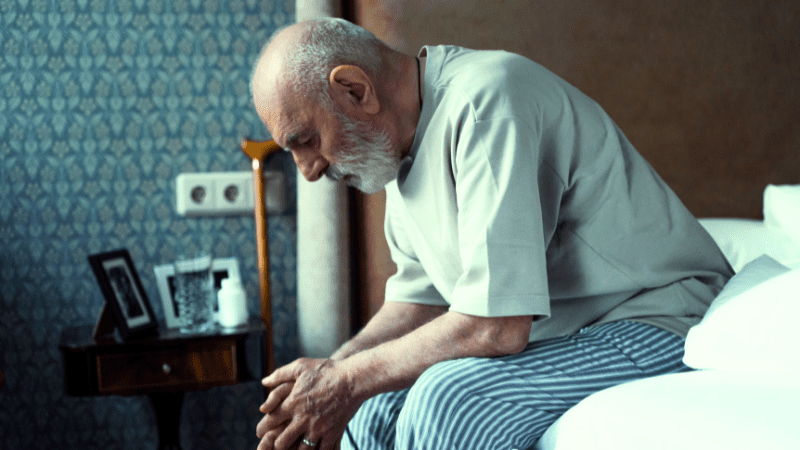
 Great Reset1 day ago
Great Reset1 day agoCanada’s MAiD (State Sanctioned Murder) Report Just Dropped
-

 Business1 day ago
Business1 day agoNew Chevy ad celebrates marriage, raising children








